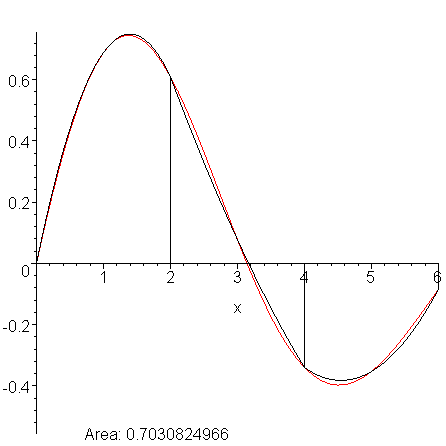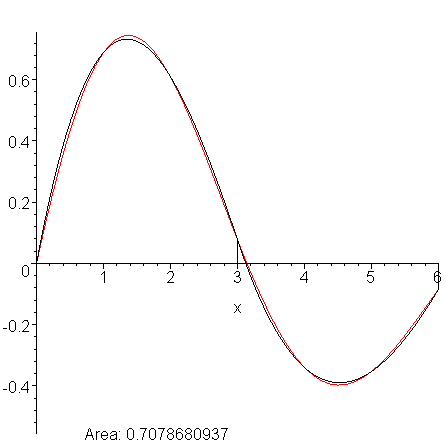Given data which is being read sequentially for which there is no possibility of sub-sampling, it is best to approximate the integral of the data by taking each triplet of points and applying Simpson's rule.
By using sets of four points and Simpson's 3/8 rule, the error is, in fact, larger.
Consider sampling the damped oscillator f(x) = e-0.2x sin(x) at each of the integers from 0 to 6. Figure 1 shows the composite trapezoidal rule is used to approximate the integral using trapezoids on each of the 6 intervals. Figure 2 shows Simpson's rule applied using three quadratic polynomials on the intervals [0, 2], [2, 4], and [4, 6] which are integrated to approximate the integral. Figure 3 shows the two cubic polynomials used by Simpson's 3/8th rule on the intervals [0, 3] and [3, 6]. The actual area is approximately 0.699648, and thus we see that Simpson's rule does have the smallest error (the error being approximately 2.39 times smaller for Simpson's rule as compared to Simpson's 3/8th rule).

Figure 1. Approximation using repeated applications of the trapezoidal rule.

Figure 2. Approximation using repeated applications of Simpson's rule.

Figure 3. Approximation using repeated applications of Simpson's 3/8th rule.
Copyright ©2005 by Douglas Wilhelm Harder. All rights reserved.


